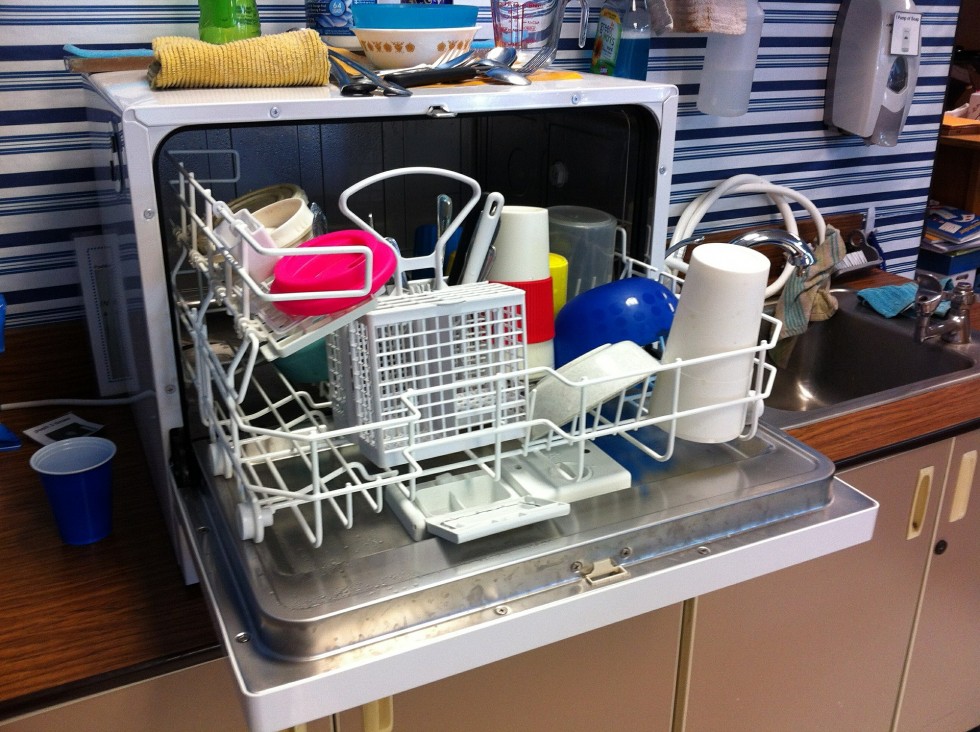Why would you need to replace a dishwasher?
Good old times of washing dishes by hand have passed (thank God!) and now the only thing we should do to get them clean is to overcome our excessive laziness and actually load and unload the dishwasher. But that lifesaver may stop working for no definite reason or just become too old-fashioned to be able to cope with the tasks it’s supposed to do. Of course, you can wash the dishes just like people used to do it years ago, but it’s unlikely that you’ll last for too long, especially if you have a family and, consequently, more dishes to clean as compared with a single person. Besides, it’s almost impossible to readjust after you’ve had a dishwasher for a long time. And, now you’re suddenly forced to grab a sponge and gloves to get everything done and don’t appear with a full sink and no clean dishes.
Whether your old one broke down and doesn’t want to wash a thing for you anymore or if it constantly leaves dishes semi-clean, groans and coughs like an old lady while working, maybe it’s time to say goodbye and purchase a brand new dishwasher. There’s also no harm in updating your current normally working one if you want it to be a bigger size or if you’ve decided to opt for a more powerful and more functional dishwasher, which has better quality and more features, saves water and energy. In the long run, even if you buy a more expensive machine, you’ll reimburse the cost difference by paying lesser bills and being eco-friendly.
Should you install a dishwasher on your own or call a professional?
So, no matter what your reason to replace a dishwasher is and what caused the problem, you’ll appear with a machine in a box. And, then you’re supposed to make that thing work. Installing a dishwasher might be really challenging and dangerous, as the process includes operating with the water supply system and electricity, and one would never want to mess with those. Besides, not everyone has a handyman talent or can deal with technology to set up everything correctly, without causing too much trouble. So, it’s probably better to hire a qualified plumber to install a dishwasher professionally. You’ll pay a little bit more, but you’ll free yourself from a long, nerve-racking and probably ineffectual job. Besides, you’ll be sure that the dishwasher is put in place properly and it’s possible to use it safely.
Go to HireRush.com, find ads of local plumbers and entrust them with the installation process. Make a call and ask if a professional is able to come and do his magic. The best option is to do that beforehand and book the service on the desired day and time. For instance, you may call a plumber the day (or several days) before you plan to purchase a dishwasher. In this case, you may also ask him for some recommendations of which model and brand will suit you best.
However, you may still try to install a dishwasher on your own if you follow the instructions on the package and ensure your own safety. And, I’ll give you general step-by-step guideline of how to do that. So, let’s get down to business!
Installation steps
- As you buy a dishwasher, make sure that it’s going to fit into your counter perfectly so that you don’t have to do any readjustments afterwards. So, make all necessary measurements in advance and go to the shop already prepared. Remember, that the standard dishwasher width is 24”. Bare that in mind if you’re planning to get new counters for kitchen as well.
- Turn the water and electricity off to stay safe.
- Disconnect your current dishwasher from water supply and electrical line and gently pull it out.
- Take your new device out of the packaging. Find a faceplate at its bottom and take it off to be able to reach the all the lines and electrical box. Lay it on the floor so that its front part is down. At this point, some water may spill from a dishwasher, but don’t worry for no reason. It happens because the manufacturer tested the quality and operational status of your device and, consequently, a little water remained in the dishwasher.
- A lot of plumbers recommend doing all the supply and electricity connection stuff before you shove a dishwasher into the counter. If you do so, you won’t break your back while doing all that weird moves and positions in attempts to reach the places and things you have to reach. Besides, you’ll be able to see what you’re doing clearly and control your motions much better.
- Now, move over to your sink. If you’ve not had a dishwasher before or if you’ve just bought new counters, you’ll probably have to make one or two holes to run various water and electrical supply lines through. Look through the instructions carefully to see exactly how many holes you might need to drill. It also depends on the way your counters are situated. Usually, one 2-inch in diameter hole on the sink’s counter’s side, made for water supply pipes, is enough. It’s drilled on that side of the sink’s base counter, which is adjacent to one of the dishwasher’s side faces, at a distance of 3 inches above the floor and couple of inches away from the wall.
- Find a special drainpipe under the sink and start joining it with the discharge pump. There’re some dishwasher installation requirements, which set the necessity to use an air gap while venting the machine to prevent water and different particles from the sink pipes from getting into the dishwasher’s ones. It’s usually attached to the drainpipes with special clamps (hose or spring ones). The next step is to connect the drainpipe and garbage disposal using the same clamps
Again, if you didn’t have a dishwasher before and your drainpipe doesn’t have an additional opening and conduit (in short, a branch for a machine), then replace it to be able to perform this step - Water supply. Make sure that your water is shut off before doing anything mentioned below. Did it? Ok, then figure out whether your dishwasher needs to be connected to hot or cold water. Then, you should probably install a shut-off valve that has two outlets to be able to turn off the sink’s or dishwasher’s water supply separately.
Then, attach one end of the machine’s supply line to that valve, but the other one – to the water inlet on the dishwasher. Take a wrench to tighten the connection. - Electricity. It’s probably the most dangerous part, so ensure that you turn the circuit breaker off before messing with wires. After that, connect the darker hot wires (they’re usually black) and neutral ones to the corresponding ones, which are located in the electricity box of the dishwasher. Use wire nuts for that matter. Find a green-round screw and attach the ground wire to it. Be really careful and don’t hurt yourself. If working with electricity is not your thing, consider calling an electrician to ask him to do this part of the task for you.
- Test run. Turn the power and water on and start an empty dishwasher to make sure that there’re no leaks.
- If there’re no further problems, you may put a dishwasher into the counter, level it and screw it to the counter top.
- Attach a faceplate to your dishwasher and enjoy the time you’ll save on doing dishes!





